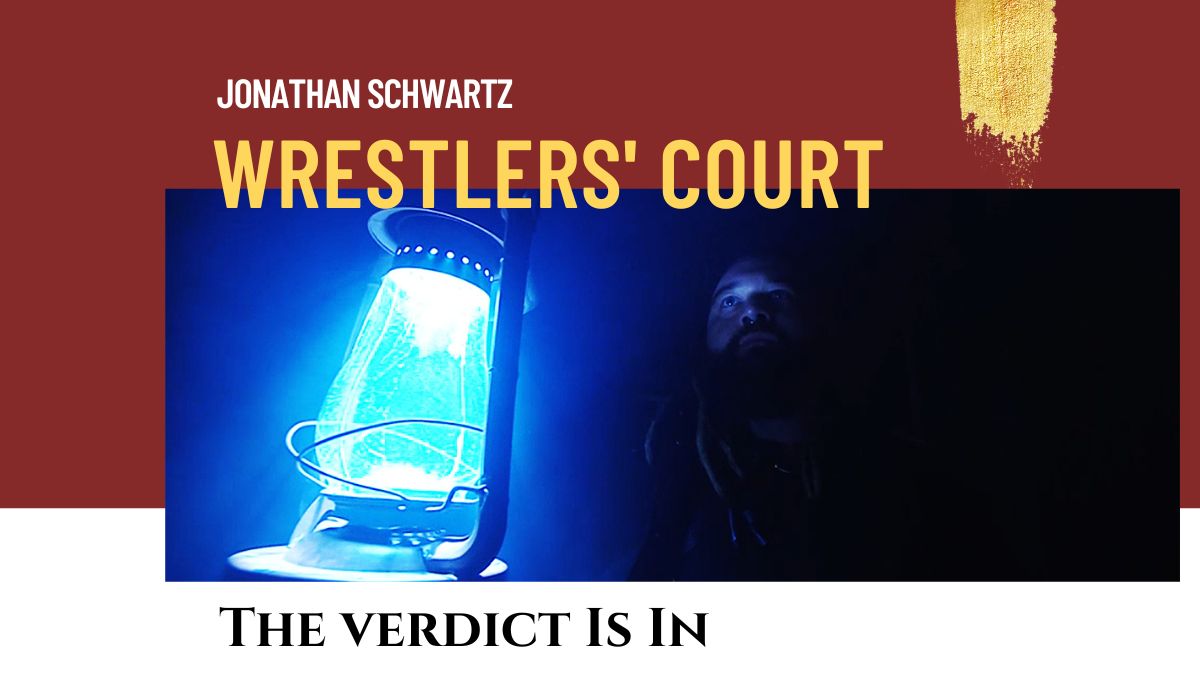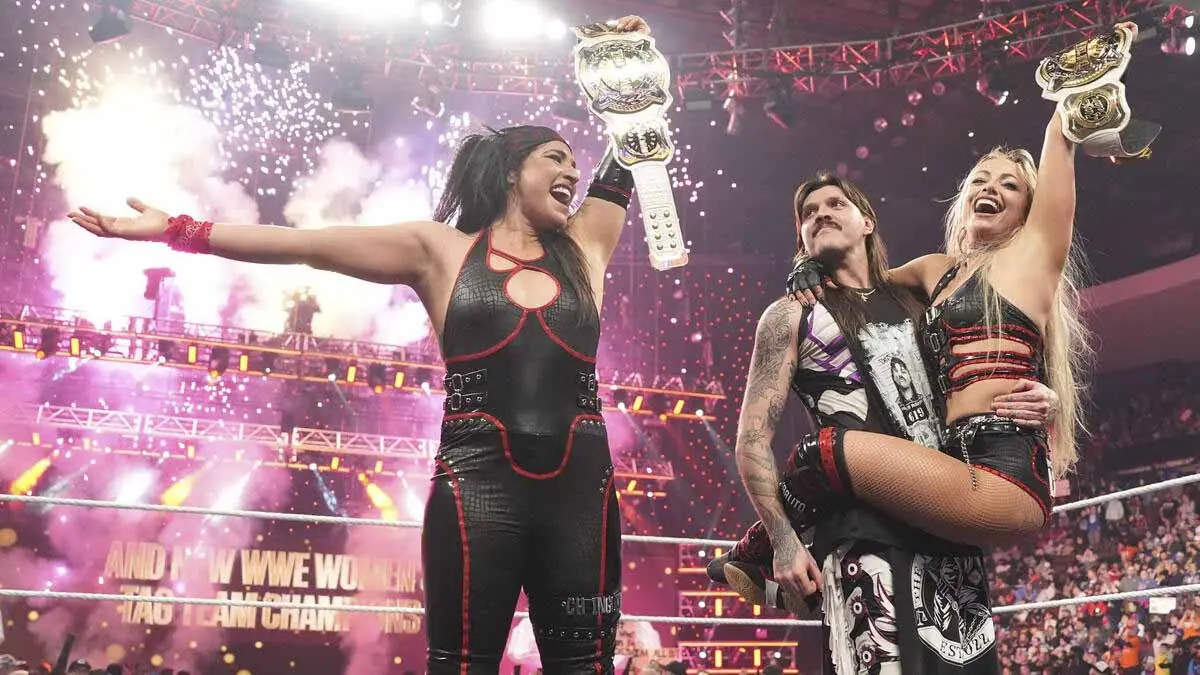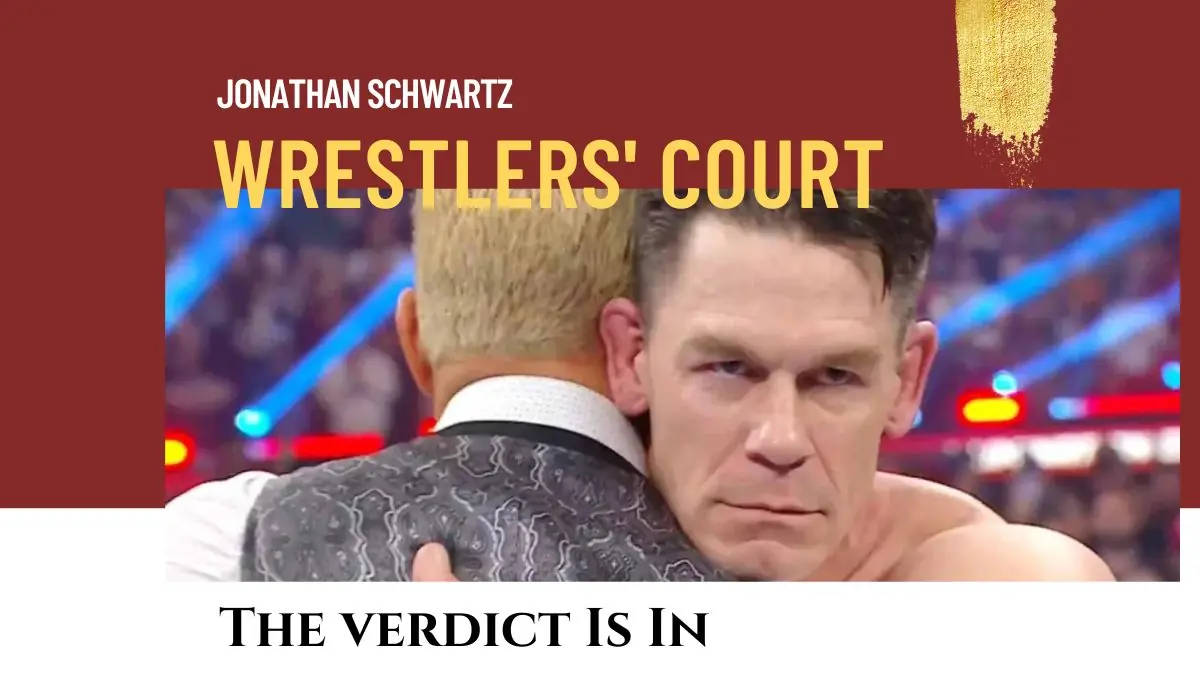In my last column, I wrote about the likely return of Taylor Rotunda’s Uncle Howdy character at the upcoming King and Queen of the Ring Premium Live Event (PLE).
By now the cat’s out of the bag: Uncle Howdy did not return at King and Queen of the Ring to a thunderous reaction from the Saudi Arabian crowd. Instead we got yet another QR code, this time pointing to the Monday following the next big WWE event: Clash at the Castle, on June 17. The code led to a further fun bit of short filmmaking. It was still a chilling appearance, because the character’s future feels so uncertain.
I like what WWE is doing here; teasing Howdy’s return from show to show, leading a segment of the audience to tune in to ‘B’ shows out of morbid curiosity. Maybe we’ll get our payoff in June. Maybe we will wait for SummerSlam.
As long as they can milk it, I dig the an-ti-ci————pation.
So far as the just-concluded PLE goes, holding off Howdy’s debut was probably the right call. Return pops are not always predictors of long-term success, and when it comes to WWE booking a lot of what happens in Saudi Arabia seems to stay in Saudi Arabia.

In any case, last time out I spoke at length about my appreciation for Bray Wyatt, the character created and portrayed by Windham Rotunda: how I enjoyed Rotunda’s use of horror fiction tropes in building Wyatt’s personae, and the limitations he came up against in trying to integrate a character based on genre fiction into the staid world of wrestling storytelling.
While Rotunda may have been the force behind Bray Wyatt and the universe he brought with him, that character is owned by WWE — which now seems ready to revisit and ultimately monetize it with or without its author. WWE will try to keep Bray Wyatt’s story going despite the death of its main character and the actor who played him. It’s a hard thing to do, but it has been done before to varying levels of success.
Let’s start by acknowledging that pro wrestling and WWE specifically have a poor record when it comes to dealing with active performers’ deaths. Brian Pillman, Owen Hart, Eddie Guerrero and Chris Benoit all died while under contract. They all received immediate tributes following their deaths. They have either been erased from history (Hart, at the request of his estate, Benoit for obvious reasons) or seen their memories exploited (Pillman, by a tasteless interview with his wife on the Raw after he died; Guerrero in angles that continue to this day).

Rotunda’s death upset his fans and devastated his colleagues, but to WWE it was a business interruption. Given the company’s investment in the man, the character and the world he sought to create it comes as no surprise if TKO sees money left on the table and an opportunity in Uncle Howdy to mitigate its losses. This sounds cold, but it’s show business in all its forms.
Under less serious circumstances than the death of a performer, WWE has regularly repurposed existing intellectual property. Musically, CM Punk inherited his original “This Fire Burns” theme music from Randy Orton, who ditched it in favor of “Burn in My Light” and then “Voices”. Kurt Angle took Attitude Era superstar The Patriot’s theme as his own (the accompanying “You Suck” chants were just for Kurt — though Chad Gable has grown into them). Ernest “The Cat” Miller had a very brief WWE run. His theme music “Somebody Call My Momma” was recycled (along with Flash Funk’s dancing girls) for Brodus Clay as “The Funkasaurus” and then a pre-New Day Xavier Woods.

New performers have often stepped into existing characters without so much as a soap opera voiceover announcing a cast change. Barry Darsow replaced Randy Colley as Demolition Smash. Paul Diamond took over Max Moon/Komet Kid’s mask and costume from Konnan. The list of official WWE Doink the Clowns includes Matt Borne, Steve Keirn, Steve Lombardi and Ray Apollo. Most infamously, Rick Bognar and Glenn Jacobs were assigned the characters of Razor Ramon and Diesel after their original portrayers — Scott Hall and Kevin Nash — signed with rival promotion WCW. The ‘fake’ Razor and Diesel were rejected by fans but made an important point: so far as the office is concerned, the people who play the characters we see on television are fungible.
While we as the audience may grow attached to a given performer’s take on a character, chances are there was always somebody waiting in the wings. Sometimes a switch can’t be concealed but the type is preserved. Barry Windham opted not to return to the WWF alongside his US Express tag team partner Mike Rotunda. He was replaced by another tall, lanky blonde in Dan Spivey. Early 1980s tag team the Moondogs originally consisted of Rex (Randy Colley, again) and King (Edward White). The Moondogs won the WWF tag team championship, then the Canadian King fell afoul of US Immigration. He was replaced by Larry Booker, who walked into the championship as Spot. Wrestling ‘families’ like the Grahams or Andersons or Valiants or Fargos established the same kind of continuity with a shared fictional last name and occasionally a bottle of peroxide. This approach worked so well that legitimate families like the Von Erichs or Funks or Vachons were drawn in.

Character swaps become easier the more outrageous the gimmick and the less tied it is to one promotion. I mentioned the Demolition Smash Switcheroo. Knowledgeable fans recognized Colley immediately, since he had been a Moondog, which is why he was axed. Demolition Ax was played by Bill Eadie. He had previously competed under a hood as the Masked Superstar and the babyface Super Machine, and thus wasn’t called out the same way. Personnel changes seem to be easier when the character is fully masked. There have been any number of Assassins and Demons and Medics and Conquistadors and Executioners and Kongs and Spoilers and Destroyers (Super and otherwise), plus innumerable horror-themed acts that employ Jason Voorhees, Leatherface and Freddy Kreuger Hallowe’en full-face masks or Lord Humungus bondage gear.
As special as Bray Wyatt may be, outside of wrestling many beloved characters and fictional universes have passed through multiple hands. If you’re a comic book fan you know that most of your favorite characters were collaborative efforts between parties who later fell out. These characters pass from writer to writer long after their creators’ deaths. If we’re lucky, a new creator will breathe life into them. Depending on who holds the pen, Batman has been portrayed as a camp icon and a grim avenger — the former version made for fun television in the 1960s; the latter has informed cinematic versions since the 2000s. Ian Fleming’s James Bond has received similar treatment. Most fans have their favorite versions (and your favorite is most likely the version you grew up with; I’ll take Michael Keaton and Sean Connery over all others) but look forward to new artists’ interpretations since that’s how they retain their place in the public consciousness.
Without periodic updates characters can easily lapse into irrelevance. Older comics characters like Little Orphan Annie or Rex Morgan MD (or pre-superheroes like Mandrake the Magician, Flash Gordon, the Phantom, Doc Savage or the Spirit) are periodically revived, but remain locked in time and place, ignored by a mainstream audience until someone digs up their intellectual property rights. Comics wizard Alan Moore resuscitated several brands, and when he couldn’t obtain the necessary licensing rejigged disused heroes into his dark Watchmen series. Some characters have entered the public domain, where just about any nerd with a laptop can try to add to the canon. I would submit that as long as a new creator treats the source material respectfully but not reverently, there is plenty of inspiration to go around.
One of my favorite series of books was The Hitchhiker’s Guide to the Galaxy by Douglas Adams. Adams died in 2001 having completed his ‘trilogy of five’ books, plus several other titles. To celebrate the 30th anniversary of Hitchhiker his publisher commissioned a new book by Eoin Colfer. Swedish author Stieg Larsson wrote The Girl with the Dragon Tattoo and two other books in his proposed ten-volume Millennium series. He died at age 50 before any of them were published. His publisher commissioned David Lagercrantz to continue the series. So far, Lagercrantz has written three books set in Larsson’s universe.
There are plenty of examples where a movie’s lead actor dies during filming.
Dracula actor Bela Lugosi passed away during production of Ed Wood’s Plan 9 from Outer Space. To finish his production Wood cast his wife’s chiropractor in Lugosi’s role. He tried to shield the audience from the fact by cutting Lugosi’s remaining lines and directing Lugosi’s replacement to vamp around with a cape covering his face. It didn’t help that said replacement was more than a foot taller than Lugosi.
More recently, clever use of stand-ins and camera angles and extra footage and increasingly, computer graphics and agile scriptwriting teams have helped cover for movie actors who died during production, like Brandon Lee in The Crow or Paul Walker in Furious 7. Heath Ledger passed away in 2009, having only finished a third of his scenes for his final film The Imaginarium of Doctor Parnassus. Director Terry Gilliam went a different route, adjusting the film to have fellow actors and friends of Ledger assume multiple ‘fantasy’ versions of his character through a dream world. Ledger’s role was thus shared with Johnny Depp, Jude Law and Colin Farrell.
Television shows face different demands as deaths can occur in the middle of a season, requiring urgent retooling. John Ritter’s death during production of the sitcom 8 Simple Rules was acknowledged and written into the show along with a period of mourning for the rest of the cast. This bought time for the writers to figure out a new direction, casting David Spade and James Garner as sympathetic supporting characters. Phil Hartman was murdered in between seasons of his sitcom NewsRadio. His character was also killed off and replaced with fellow Saturday Night Live alumnus Jon Lovitz. Glee star Corey Monteith and Riverdale actor Luke Perry saw their characters killed shortly into the new season following their real-life deaths. They received tribute episodes.
Sesame Street handled the subject following the real-life death of Will Lee, who played Mr. Hooper. Lee taped his final segments in the role in late 1982, two weeks before his death. A full year later, Sesame Street aired an episode where the characters learned that Mr. Hooper had died. The episode explained the permanence of death and tracked Big Bird as he dealt with the loss of his friend. A few years later Northern Calloway, who played David, suffered a mental breakdown and was quietly removed from the show. Calloway was institutionalized in a psychiatric hospital but David was written off Sesame Street to take care of his grandmother. Less than eight months later, Calloway died from “excited delirium syndrome” a since-discredited diagnosis that was often assigned to individuals who died under restraint while in custody.

There was so much good stuff to Bray Wyatt, it would be a shame if at some point it isn’t rediscovered and reworked for a new generation of fans. Rotunda acknowledged borrowing from Dan Spivey’s “Waylon Mercy”, which in turn took many of its mannerisms and visual cues from Robert DeNiro’s portrayal of psychopath Max Cady in the 1990s version of Cape Fear (itself a remake of a 1960s movie with an even scarier Robert Mitchum playing a dead-eyed lunatic). Rotunda asked Spivey’s permission to incorporate aspects of Mercy into Wyatt and later paid tribute to Spivey by naming one of his Firefly Funhouse characters Mercy the Buzzard.
At some point someone is bound to iterate on the character and world he created, so why not now, and why not use whatever material he left behind to fuel further storylines?
Perhaps the most interesting question to come with Uncle Howdy’s return is whether and how Bray Wyatt might be used, even though the man who played him is gone. While the purported Wyatt 6 stable is full of talented performers, none of them are known for their promo skills.
One solution might be to just keep using Bray.
I’ll discuss that, and what it might mean for wrestling going forward next time.
TOP PHOTO: Bray Wyatt and Uncle Howdy. WWE photos
RELATED LINKS




